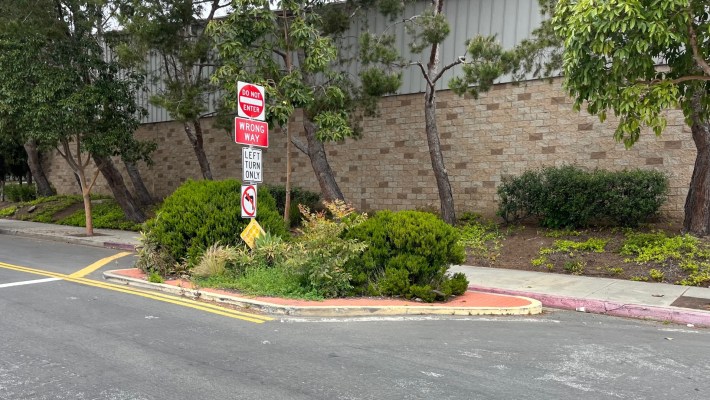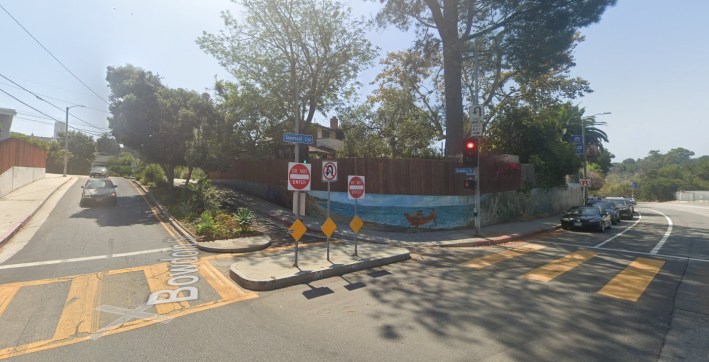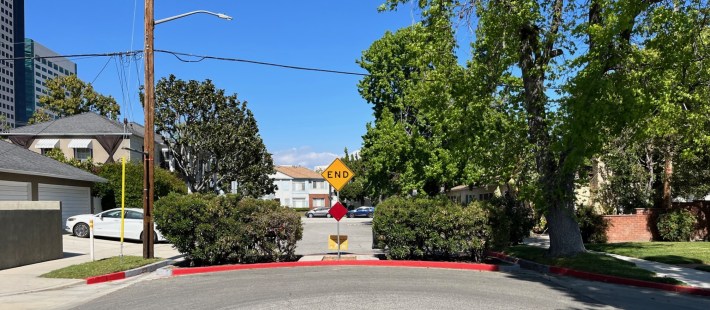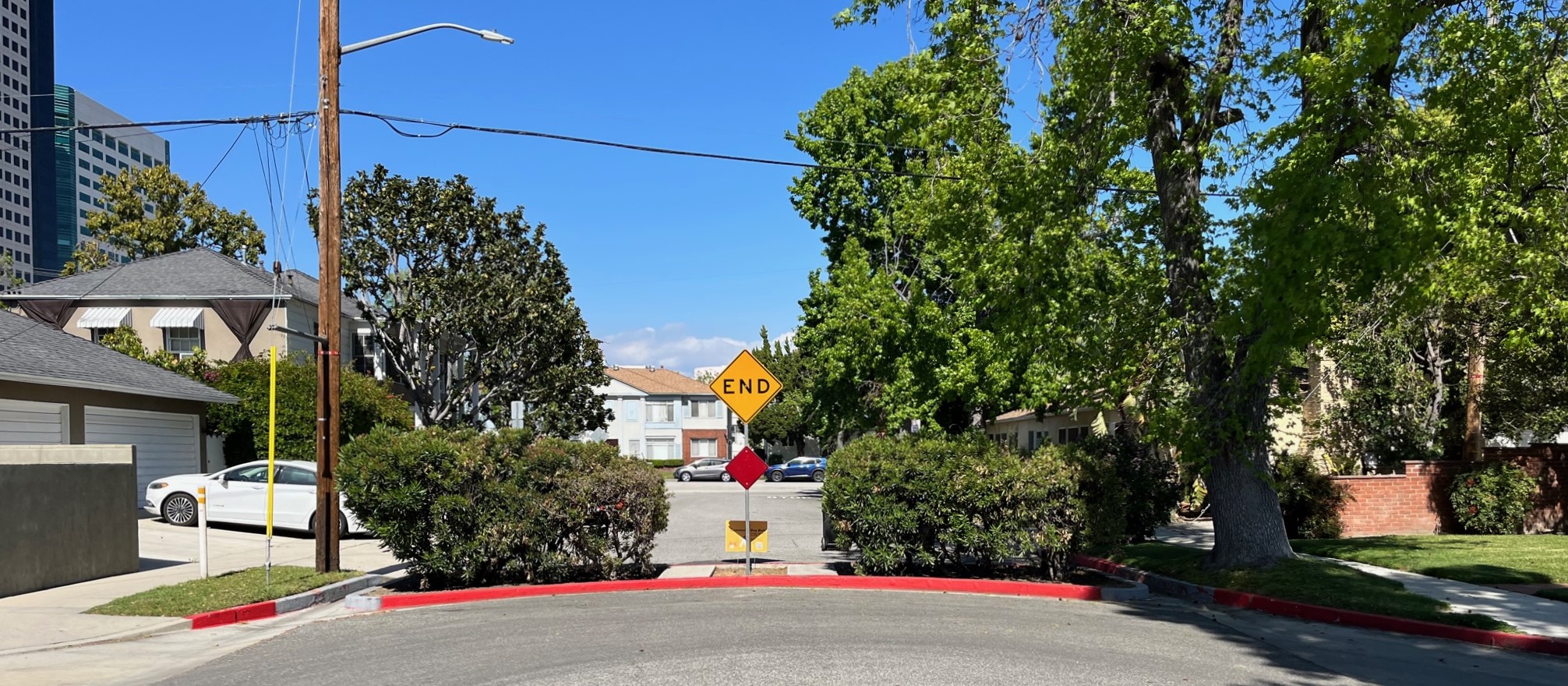Back in 2020, Streetsblog published a short post on how cities, mostly Los Angeles, block off streets to keep drivers from cutting through rich residential neighborhoods. The piece pointed out the double standard that L.A. has commonly closed streets to benefit well-off residents, but generally won't do the same closures to improve bike and pedestrian safety - even in the face of record traffic deaths.
Some cities - Portland, Berkeley - line up these no-through-traffic diverters to form what's called a Bicycle Boulevard or Neighborhood Greenway. Bicycle Boulevards are a low-traffic streets shared by people in cars and on bike, but where traffic has been diverted or calmed, so the priority is people on foot and on bike.
Southern California has a few halfhearted Bike Boulevards/Neighborhood Greenways (including in Santa Monica, Hollywood, Long Beach, and unincorporated L.A. County), but generally they haven't been very effective. The best example is perhaps Santa Monica's Michigan Avenue Greenway (MANGo), where the city added traffic circles and is currently adding two short stretches of bike path.
The designers and engineers responsible for these So. Cal. facilities have been unwilling to include serious enough treatments to divert drivers.
Today, SBLA showcases a few more of the many street closures/diverters that currently keep tony residential neighborhoods safe.
Where Venice, Mar Vista, and Culver City intersect (around Costco on Washington Boulevard), the city of L.A. added several landscaped median diverters.

One of the nicest best-landscaped diverters in L.A. City can be found on Bowdoin Street at Temescal Canyon Road, near Palisades High School.

Atop the the post and below are a few of many closed streets keeping car traffic out of the community of Toluca Lake. Toluca spans about a mile (including mostly city of L.A., but also partly in the city of Burbank) and has a half-dozen diverters to keep drivers from cutting through.

Most of Toluca's diverters are on the eastern edge of the neighborhood, in the city of Burbank.



Burbank has done at least a few more recent street closure diverters along Alameda Avenue (example).
These street closures are worthwhile facilities. These rich neighborhoods deserve to be safe, and so do their less well-off counterparts. Cities should build on these successes, and not be shy about deploying some strategic street closures as an effective tool to prioritize the safety and convenience of people getting around on foot and on bike.
The city of L.A. is looking at some similar features to prioritize safe connections on low-stress corridors. Hopefully these can move from planning to on-the-street improvements soon. Lives depend on it.







